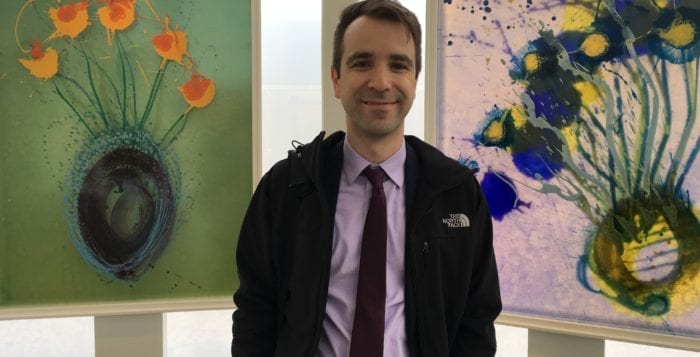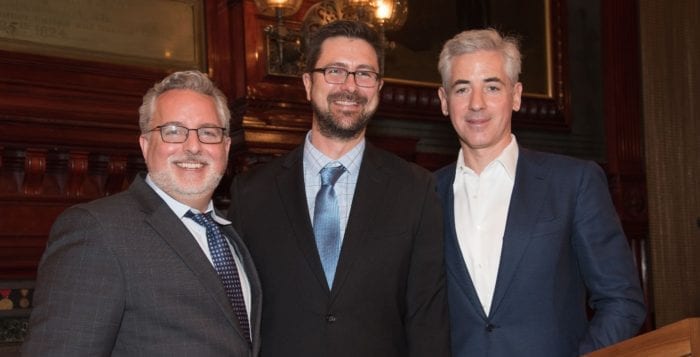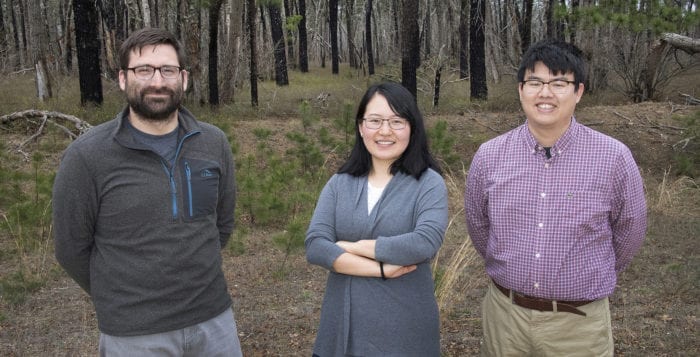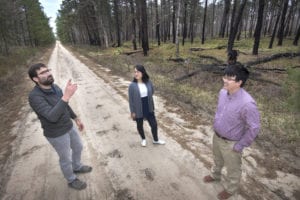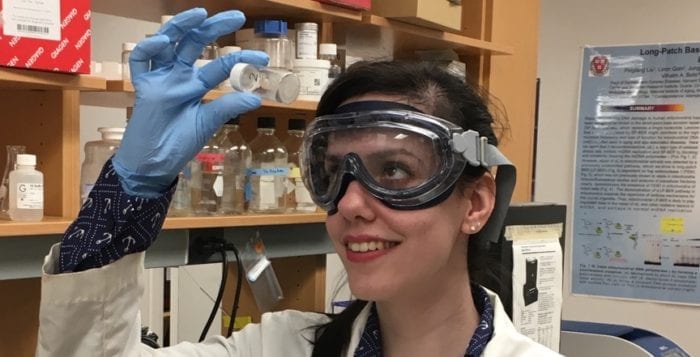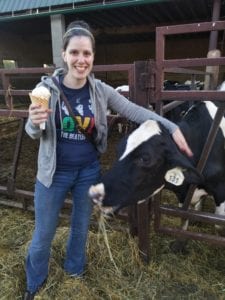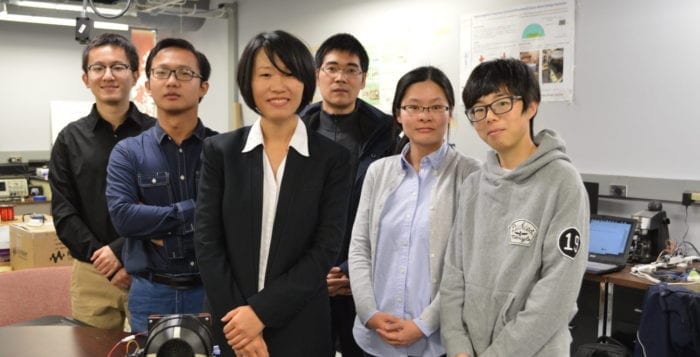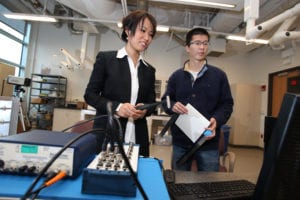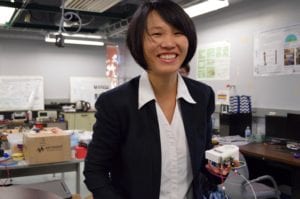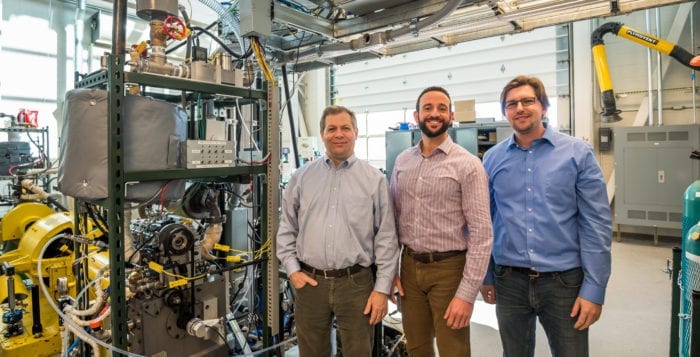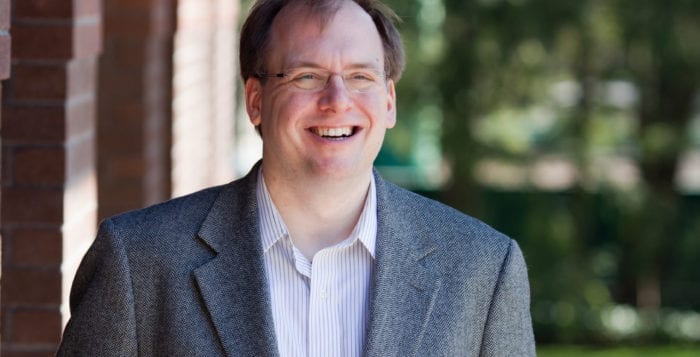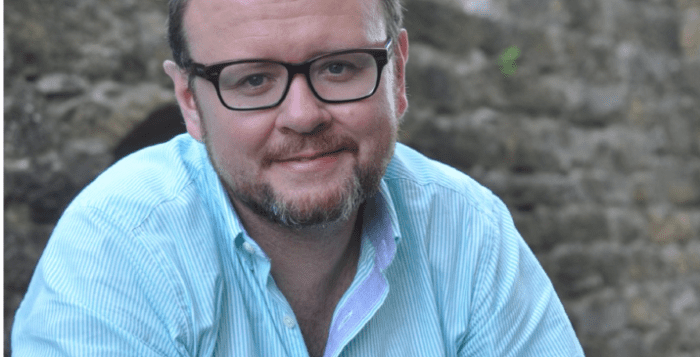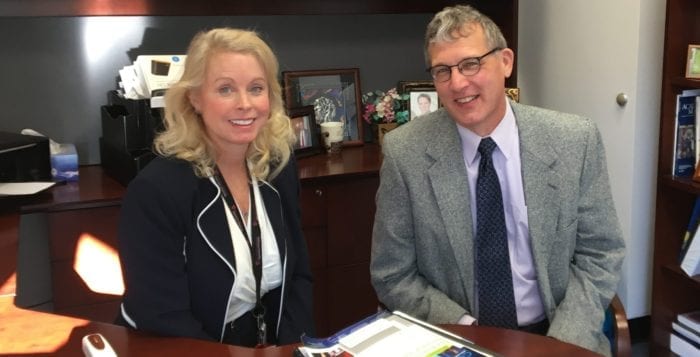By Daniel Dunaief
What if doctors could copy human cancers, test drugs on the copies to find the most effective treatment, and then decide on a therapy based on that work?
Hervé Tiriac, a research investigator at Cold Spring Harbor Laboratory, moved an important step closer to that possibility with pancreatic cancer recently.
Tiriac, who works in the Cancer Center Director Dave Tuveson’s lab, used so-called organoids from 66 patients with pancreatic ductal adenocarcinoma tumors. These organoids reacted to chemotherapy in the same way that patients had.
“This is a huge step forward,” Tiriac said, because of the potential to use organoids to identify the best treatments for patients.
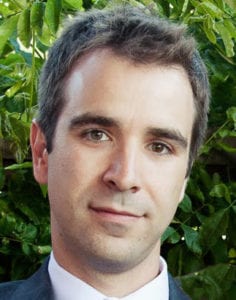
Tuveson’s lab has been developing an expertise in growing these organoids from a biopsy of human tumors. The hope throughout the process has been that these models would become an effective tool in understanding the fourth most common type of cancer death in men and women. The survival rate five years after diagnosis is 8 percent, according to the American Cancer Society.
The study, which was published in the journal Cancer Discovery, “shows real promise that the organoids can be used to identify therapies that are active for pancreatic cancer patients,” Tuveson explained in an email. “This may be a meaningful advance for our field and likely will have effects on other cancer types.”
Kerri Kaplan, the president and CEO of the Lustgarten Foundation, which has provided $150 million in financial support to research including in Tuveson’s lab, is pleased with the progress in the field.
“There’s so much momentum,” Kaplan said. “The work is translational and it’s going to make a difference in patients’ lives. We couldn’t ask for a better return on investment.”
Tiriac cautions that, while the work he and his collaborators performed on these organoids provides an important and encouraging sign, the work was not a clinical trial. Instead, the researchers retrospectively analyzed the drug screening data from the organoids and compared them to patient outcomes.
“We were able to show there were parallels,” he said. “That was satisfying and good for the field” as organoids recapitulated outcomes from chemotherapy.
Additionally, Tiriac’s research showed a molecular signature that represents a sensitivity to chemotherapy. A combination of RNA sequences showed patterns that reflected the sensitivity for the two dominant chemotherapeutic treatments. “It was part of the intended goal to try to identify a biomarker,” which would show treatment sensitivity, he said.
While these are promising results and encourage further study, researchers remain cautious about their use in the short term because several technical hurdles remain.
For starters, the cells in the organoids take time to grow. At best right now, researchers can grow them in two to four weeks. Drug testing would take another few weeks.
That is too slow to identify the best first-line treatment for patients with advanced pancreatic cancer, Tiriac explained. “We have to try to see if the organoids could identify these biomarkers that could be used on a much shorter time frame,” he added.
Tuveson’s lab is working on parallel studies to accelerate the growth and miniature the assays. These efforts may reduce the time frame to allow patients to make informed clinical decisions about their specific type of cancer.
As for the RNA signatures, Tiriac believes this is a first step in searching for a biomarker. They could be used in clinical trials as is, but ideally would be refined to the minimal core gene signatures to provide a quick and robust assay. It is faster to screen for a few genes than for hundreds of them. He is studying some of these genes in the lab.
Researchers in Tuveson’s lab will also continue to explore biochemistry and metabolism of the organoids, hoping to gain a better insight into the mechanisms involved in pancreatic cancer.
Going forward, Tiriac suggested that his main goal is to take the gene signatures he published and refine them to the point where they are usable in clinical trials. “I would like to see if we can use the same approach to identify biomarkers for clinical trial agents or targets that may have a greater chance of impact on the patients,” he said.
The research investigator has been working at Tuveson’s lab in Cold Spring Harbor since the summer of 2012.
Tuveson applauded Tiriac’s commitment to the work. Without Tiriac’s dedication, “there would be no Organoid Profiling project,” Tuveson said. “He deserves full credit for this accomplishment.”
Tiriac lives in Huntington Station with his wife Dannielle Engle, who is a postdoctoral researcher in the same lab. He “really enjoyed his time on Long Island,” and suggested that “Cold Spring Harbor has been a fantastic place to work. It’s probably the best institution I’ve worked at so far.”
He appreciates the chance to share the excitement of his work with Engle. “You share a professional passion with your loved one that is beyond the relationship. We’re able to communicate on a scientific level that is very stimulating intellectually.”
Born in Romania, Tiriac moved to France when his family fled communism. He eventually wound up studying in California, where he met Engle.
Tuveson is appreciative of the contributions the tandem has made to his lab and to pancreatic cancer research.
“Although I could not have imagined their meritorious accomplishments when I interviewed them, [Tiriac and Engle] are rising stars in the cancer research field,” he said. “They will go far in their next chapter, and humanity will benefit.”
Kaplan suggested that this kind of research has enormous potential. “I feel like it’s a new time,” she said. “I feel very different coming into work than I did five years ago.”

